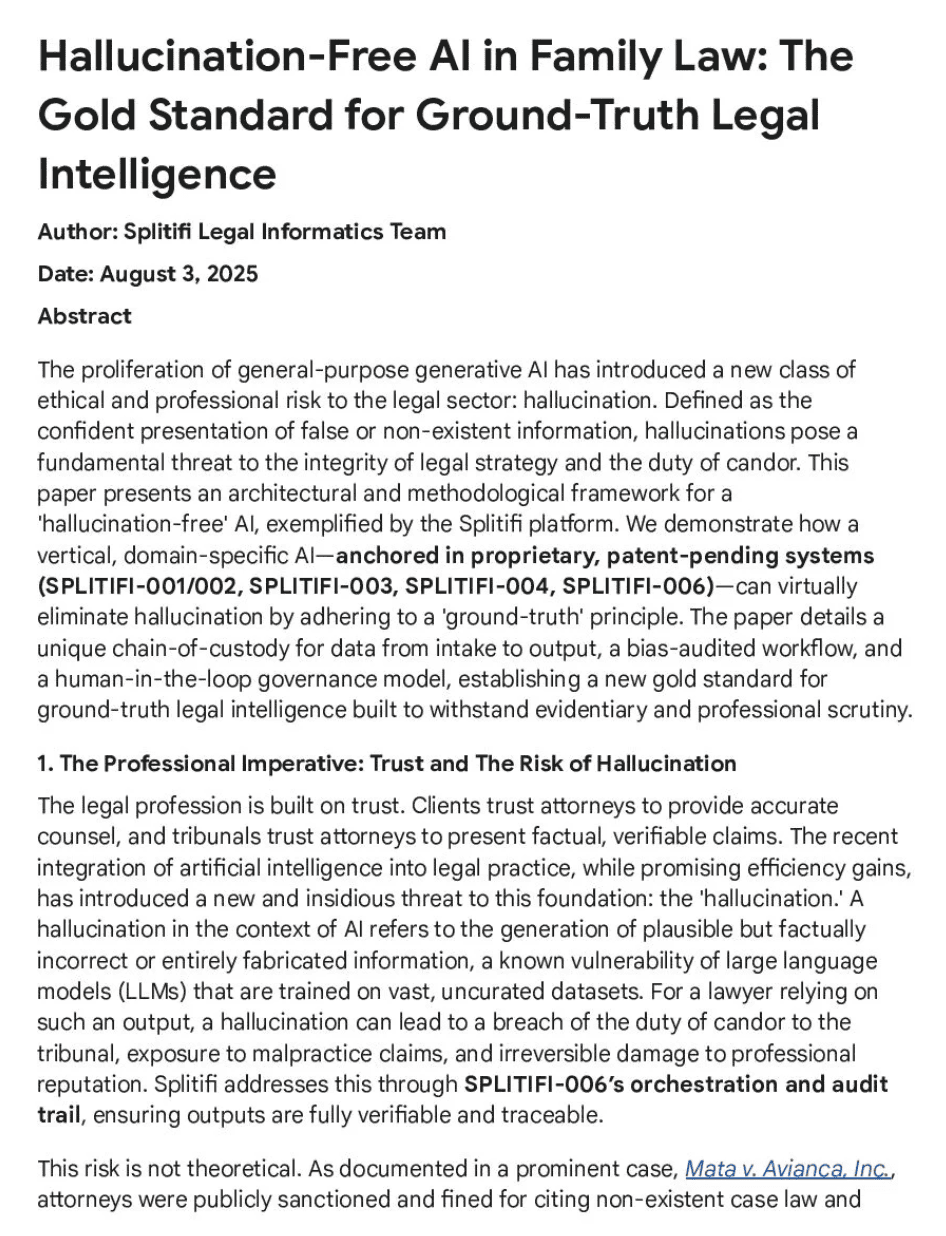AI Hallucinations in Law: Splitifi’s Deterministic Standard Ends the Chaos
Download the definitive white paper on AI hallucinations in law. Learn how Splitifi’s deterministic AI standard ends hallucinations and ensures accuracy in family law.
AI Hallucinations in Law: Splitifi’s Deterministic Standard Ends the Chaos
This white paper reveals why AI hallucinations in law undermine accuracy — and how Splitifi’s deterministic framework eliminates them with verifiable, data-backed clarity. Get the proof attorneys, judges, and individuals need.
Access the White Paper
Download — AI Hallucinations in Law White Paper
Fill in your details below to access AI hallucinations in law. You’ll receive an instant download and a follow-up email with your copy.
- Length: ~25 pages
- Topic: Deterministic AI, hallucination prevention
- Audience: Individuals, Attorneys, Judges
Privacy: we use your email to deliver the download and relevant updates. You can unsubscribe anytime.
What You’ll Learn about AI Hallucinations in Law
This research-backed white paper breaks down the systemic risks of AI hallucinations in law and introduces Splitifi’s deterministic AI standard. You’ll discover:
- The five core drivers of hallucinations in legal contexts and how they appear in day-to-day work.
- How hallucinations distort custody strategy, discovery review, and courtroom preparation.
- The deterministic framework that prevents hallucinations and raises evidentiary reliability.
- Implications for attorneys, judges, and litigants across motions, settlement, and trial.
Built on real-world data and designed for verifiability, this white paper sets the benchmark for AI divorce tools that value accuracy over speculation.
Why Deterministic AI Solves AI Hallucinations in Law
Probabilistic systems can produce fluent but unfounded outputs. Our deterministic standard compresses ambiguity by constraining models to validated sources, explicit rules, and audit-ready reasoning. In practice, that means fewer surprises, cleaner discovery, and consistent outcomes aligned with courtroom expectations.
For independent context on AI risk management, see the NIST Artificial Intelligence resources and Stanford Human-Centered AI. Our approach aligns with external guidance while tailoring methods to family law.
Who Should Read “AI Hallucinations in Law”
- Individuals: reduce confusion with step-by-step clarity grounded in facts.
- Attorneys: cut rework and motion practice by eliminating speculative drafts.
- Judges: prioritize measurable criteria and traceable reasoning over narrative spin.
Whether you manage complex discovery or high-stakes custody, this paper shows how a deterministic approach restores confidence and accountability.
How We Gate the AI Hallucinations in Law White Paper
Submit the short form to access the download page immediately. You’ll also get a secure link via email for your records. Gating protects original research and ensures you receive updates, errata, and companion resources as the field evolves.
Prefer to browse more topics first? Visit the Splitifi White Papers Library or read our companion article for a fast overview.
FAQ: AI Hallucinations in Law
Why is this white paper gated?
We share peer-level research. Gating ensures readers get the latest updates, errata, and related resources while protecting the integrity of original work.
Will I get the PDF right away?
Yes. Once you submit the form, you’ll receive an instant download and an email with your copy.
